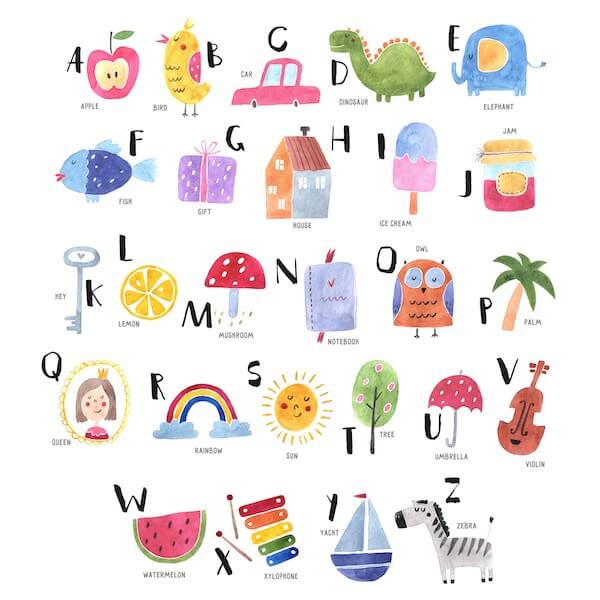
Tracing a letter of the alphabet is a fun and important activity for preschoolers to do as they start their journey toward reading and writing. Here are five benefits to tracing letters for young children:
1. Tracing Letters Can Strengthen Fine Motor Skills
When Rosie was in preschool, we’d look for any opportunity to strengthen those fine motor skills and alphabet letter tracing is a great way to do it! Letter tracing helps kids build muscle control and coordination from the wrists all the way to the tips of their fingers.
With all fine motor activities, repetition is key. Every time we pick up a pencil, our brain sends signals to communicate with the hands. The more we practice holding a pencil and putting it to paper, the more familiar those signals become until writing becomes second nature! Check out these super helpful and sneaky tips for how to hold a pencil.
2. Using Preschool Tracing Sheets Can Improve Spatial Awareness
Another benefit of letter tracing that goes hand in hand with strengthening those fine motor skills is building spatial awareness. As preschoolers absorb the world around them, they develop a sense of space and place. What does it mean for my body to be where it is right now? What happens when I move closer to the object in front of me? How about farther away? At its simplest, sitting at a table with a pencil in hand, helps solidify this physical sense of self. How far is the paper from my face? How far can my arms reach?
In addition to the physical, this sense of space brings with it a vocabulary that our children are beginning to master — words like: ‘above,’ ‘below,’ ‘next to,’ ‘inside,’ and ‘outside,’ to name a few. Tracing the alphabet can be a great opportunity to continue practicing these concepts. Work together with your child to talk about the letter they are tracing. What kinds of movements are they making? What kinds of lines and shapes do they see? And where do these sit in relation to one another? Not only does this strengthen that sense of space, but it’s a great introduction to the letters of the alphabet. It’s never too early to start!
3. Letter Tracing Sets the Foundation for Writing
Believe it or not, there is no age too young to start practicing writing skills! Straight, zig-zag, and curved lines are the building blocks of calligraphy. Even if it isn’t done with a full understanding of the letters and what they mean, tracing letters helps prepare children to become skilled writers.
Especially in the early years, teaching preschoolers to trace allows them to find their dominant writing hand as well as become familiar with techniques like ‘crossing the midline,’ which will make it easier for them to eventually start writing letters on their own.
4. When Kids Trace the Alphabet They Focus and Gain Confidence
Tracing letters requires focus and concentration, which helps children develop important skills for learning and problem-solving. Tracing letters can also help children develop patience and persistence, as they may need to practice a letter several times before they are able to trace it accurately.
Tracing letters can be a fun and rewarding activity for preschoolers, and it can boost their confidence and sense of accomplishment. As children see their own progress and improvement in their tracing skills, they may feel proud of themselves and more certain in their abilities!
5. Teaching Tracing to Kids Fosters Creativity
Tracing letters can also be a creative activity for preschoolers. Try experimenting with different colors and materials, such as crayons, markers, or even paint, to trace their letters. This can help them express their creativity and have fun while learning.
With so much information out there, it can feel overwhelming and confusing to know what types of activities to try with your preschoolers. Next time you’re looking for a fun and educational activity for your little one, consider tracing a letter by breaking out one of these free tracing letters worksheets, and watch as they continue to grow and learn… and write!
